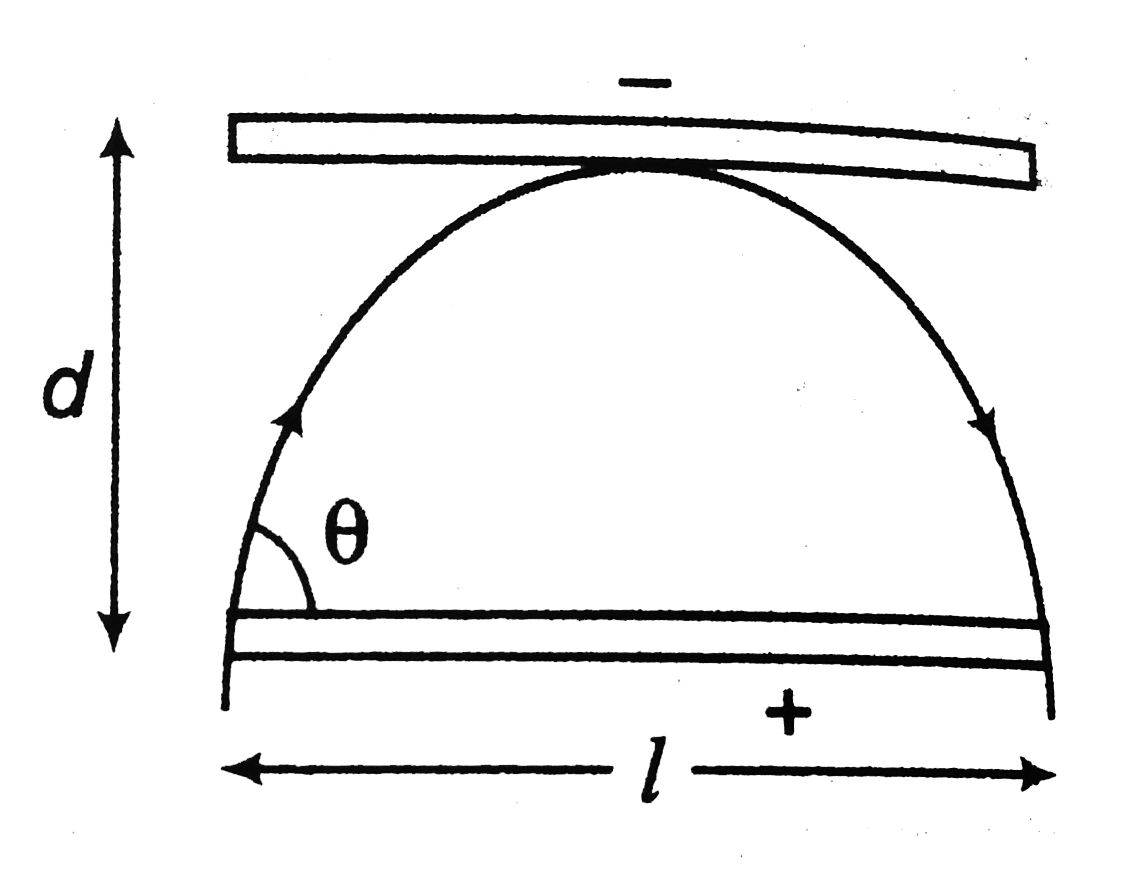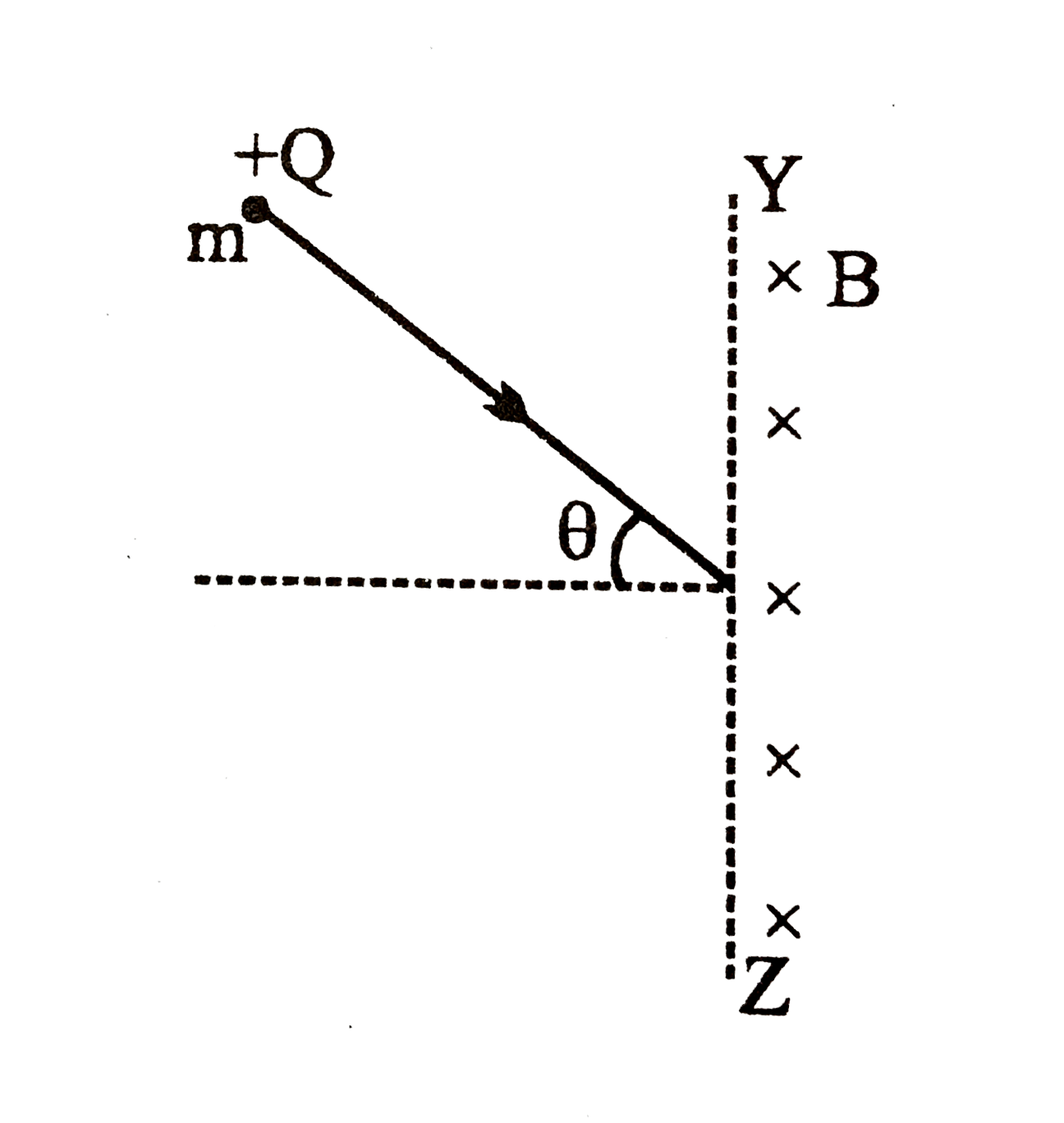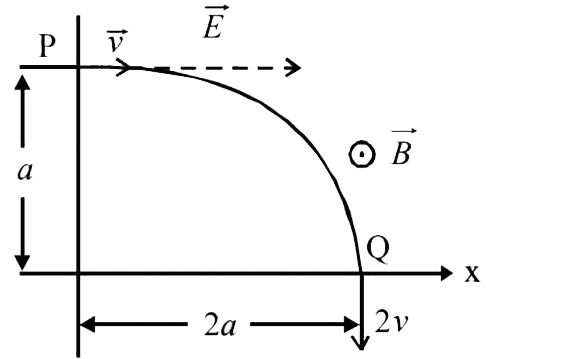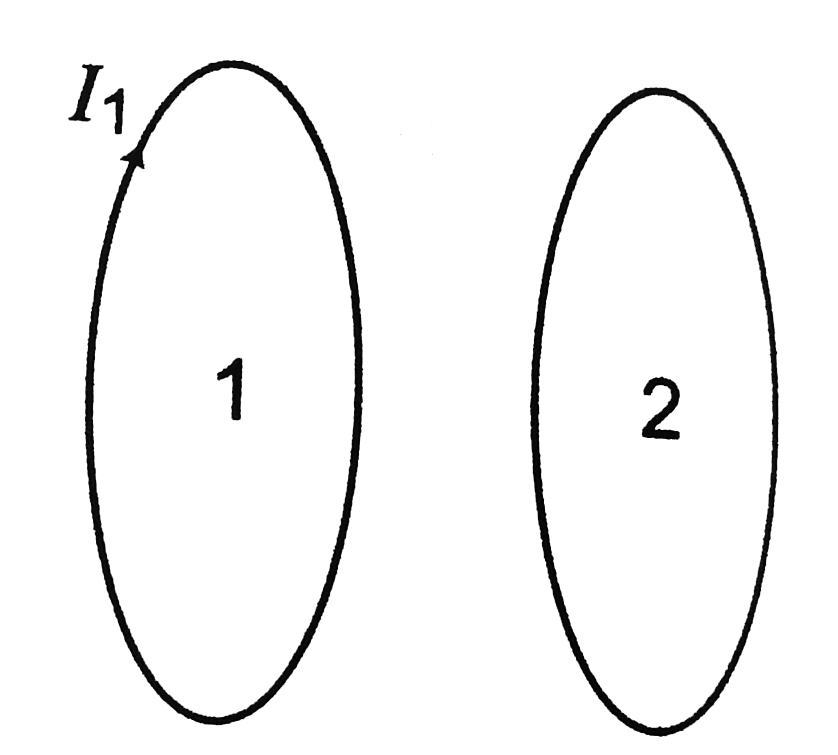Complete Solutions to All Questions of chapter MOTION OF CHARGED PARTICLES of Class 12 book with complete answers and questions
| Class 12 | PHYSICS |
| Chapter | MOTION OF CHARGED PARTICLES |
| D MUKHERJEE | All Questions |
| Number Of Questions | 48 |
| Academic Year | 2023-24 |
An electron of mass `m_(e )` initially at rest moves through a certain distance in a uniform electric field in time `t_(1)`. A proton of mass `m_(p)` also initially at rest takes time `t_(2)` to move through an equal distance in this uniform electric field.Neglecting the effect of gravity, the ratio of `t_(2)//t_(1)` is nearly equal to
View SolutionAn electron enters the region between the plates of a parallel plate capacitor at an angle `theta` to the plates. The plate width is `l`, the plate separation is `d`. The electron follows the path shown just missing the upper plate. Neglect gravity. Then,
 `
`
View SolutionWhich of the following statements is correct?
View SolutionA charged particle begins to move in a magnetic field, initially parallel to the field. The direction of the field now begins to change, with its magnitude remaining constant
View SolutionA proton moves horizontally towards a vertical conductor carrying a current upwards. It will be deflected
View SolutionA charged particle moves with velocity `vec v = a hat i + d hat j` in a magnetic field `vec B = A hat i + D hat j.` The force acting on the particle has magnitude F. Then,
View SolutionTwo very long straight parallel wires carry steady currents `i` and `2i` in opposite directions. The distance between the wires is `d`. At a certain instant of time a point charge `q` is at a point equidistant from the two wires in the plane of the wires. Its instantaneous velocity `vecv` is perpendicular to this plane. The magnitude of the force due to the magnetic field acting on t he charge at this instant is
View SolutionAn electron is ejected from the surface of a long, thick straight conductor carrying a current, initially in a direction perpendicular to the conductor. The electron will
View SolutionA particle with a specific charge s is fired with a speed v toward a wall at a distance d, perpendicular to the wall. What minimum magnetic field must exist in this region for the particle not to hit the wall?
View SolutionA particle with charge q, moving with a momentum p, enters a uniform magnetic field normally. The magnetic field has magnitude B and is confined to a region of width d, where `d lt (p)/(Bq)` , The particle is deflected by an angle q in crossing the field. Then

View SolutionElectrons moving with different speeds enter a unifrom magnetic field in a direction perpendicular field. They will move along circular paths .
View SolutionA charged particle entering a magnetic field from outside in a direction perpendicular to the field
View SolutionA particle with charge `+Q` and mass m enters a magnetic field to magnitude `B` existing only of the right of the boundary `YZ` The direction of the motion of the particle is perpendicular to the direction of `B` Let `T =2pi(m)/(QB)` The time spent by the particle in the field will be
 .
.
View SolutionA charged particle moves undeflected in a region of crossed electric and magnetic fields. If the electric field is switched off, the particle has an initial acceleration `a`. If the magnetic field is switched off, instead of electric field, the particle will have an initial acceleration
View SolutionA charged particle begins to move from the origin in a region which has a uniform magnetic field in the x-direction and a uniform electric field in the y-direction. Its speed is v when it reaches the point (x, y, z). Then, v will depend
View SolutionA charged particle moving in an electric field
View SolutionA particle having charge to mass ratio 's' starts from rest in a region where the electric field has constant direction but magnitude varying with time `t` as `E=E_(0)t` .In time `t`, it is observed that the particle acquire a velocity `v` after covering a distance `x` then
View SolutionIn a parallel capacitor the potential difference between the plates is `V` ,A particle of mass `m` and charge `-Q` leaves the negative plate and reaches the positive plate at distance `d` in time `t` with a momentum `p` .Then
View SolutionA uniform electric field E is established between two parallel charged plates as shown in figure. An electron enter the field symmetrically between the plates with a speed u. The length of each plate is l. if the electron does not stricke any of the plates, find the angle of deviation of the electron as it comes out of the field at the outer end of plates. `[tan^(-1) ((eEl)/(mu^(2)))]`

View SolutionIn which of the following situations will a charge experience no force?
View SolutionWhen a charged particle moves in an elecltric or a magnetic field, its speed is `v` and acceleration is `a`
View SolutionTwo parallel conductors carrying current in the same direction attract each other, while two parallel beams of electrons moving in the same direction repel each other. Which of the following statement provide part of all of the reason for this ? (Choose the incorrect option)
View SolutionTwo particles `X` and `Y` with equal charges, after being accelerated throuhg the same potential difference, enter a region of uniform magnetic field and describe circular paths of radii `R_(1)` and `R_(2)` respectively. The ratio of the mass of `X` to that of `Y` is
View SolutionA proton, a deuteron and an `alpha`- particle having the same kinetic energy are moving in circular trajectors in a constant magnetic field. If `r_p, r_d` and `r_(alpha)` denote respectively the radii of the trajectories of these particles then
View SolutionA particle of charge ` +q` and mass `m` moving under the influence of a uniform electric field ` E hat(i)` and uniform magnetic field ` B hat(k)` follows a trajectory from ` P to Q` as shown in fig. The velocities at `P and Q` are ` v hat(i)` and ` - 2v hat(j)` . which of the following statement(s) is/are correct ?

View SolutionTwo long, thin,parallel conductor are kept very close to each other, without touching. One carries a current `I,` and the other has charge `lambda` per unit length. An electron moving parallel to the conductors is undeflected. Let `C=` velocity of light.
View SolutionA region has uniform electric and magnetic fields along the positive `x`-direction. An electron is fired from the origin at an angle `theta( lt 90^(@))` with the x-axis. It will
(i) move along a helical path of increasing pitch
(ii) move along a helical path of decreasing pitch initially
(iii) return to the `yz` plane at some time
(iv) come to rest momentarily at some position
View SolutionA charged particle P leaves the origin with speed `v=v_0` at some inclination with the x-axis. There is a uniform magnetic field B along the x-axis. P strikes a fixed target T on the x-axis for a minimum value of `B=B_0`. P will also strike T if
View SolutionA charged particle is fired at an angle `theta` to a uniform magnetic field directed along the x-axis. During its motionalong a helical path, the particle will
View SolutionCurrent flows through uniform square frames as shown. In which case is the magnetic field at the centre of the frame not zero ?
View SolutionA long, narrow beam of electrons, of uniform cross-section consists of electrons moving with velcity `v` (`c=` velocity of light ). The ratio of the electric field to the magnetic field at any point near the beam is
View SolutionTwo loops are facing each other as shown in Figure. State whether the loops will attract each other or repel each other if current `I_1` is increased

View SolutionA pair of long, smooth, parallel, horizontal, conducting rails are joined to a cell at one end. There are no external electric or magnetic fields. A metal rod is placed on the rails. The rod will
View SolutionA flat, rectangular coil, carrying current is placed beside a long, straight conductor carrying current. The two are coplanar. The net force and net torque experienced by the coil are `F` and `tau`
View SolutionA small bar magnet moves along the axis of a flat, closed coil. The magnet will attract the coil
View SolutionA metal ring is placed in a magnetic field, with its plane `_|_` to the field. If the magnitude of the field begins to change, the ring will experience
View SolutionA metal rod of length `l` pivoted at is upper end. It is released from a horizontal position. There is a uniform magnetic field `_|_` to its plane of rotation. When it becomes vertical, the p.d. across its ends is proportional to
View SolutionA thin, straight conductor lies along the axis of a hollow conductor of radius `R`. The two carry equal currents in the same direction. The magnetic field `B` is plotted against the distance `r` from the axis. Which of the following best represents the resulting curve?
View SolutionA solenoid is connected to a cell. There is no resistance in the circuit. If the current `I` flowing in the circuit is plotted against time `t`, the slope of the curve `(dI//dt)` will
View SolutionIn a region of space with mutually perpendicular electric and magnetic fields, a charged particle moves without deflection, with a speed very much smaller tan the speed of light in vacuum (c). The energy densities due to the electric and magnetic fields are `u_(E)` and `u_(B)` respectively.
View SolutionA charged particle passes through a uniform electric field existing between the parallel plates of a capacitor. The length of each plate is `l`. Its initial velocity is parallel to the plates. When it emerges from the field, its deflection from its initial path is `delta`, and its angular deflection from its initial directioin `theta`. Then,` theta` is equal to
View SolutionA particle of mass `m` and charge `q` is projected into a region having a perpendicular magnetic, field `B`. Find the angle of deviation of the particle as it comes out of the magnetic field if th,, width of the region is (b)
(a) `(2mv)/(Bq) (b) `(mv)/(Bq)` (c) `(mv)/(2 Bq)`
View SolutionA long straight conductor carries current `I`. Assume that every charge carrier in it moves with the same drift velocity `v`. An observer moves parllel to the conductor, in the direction of the current, with a constant velocity `v//2`. He will observe that the current flowing in the conductor is
View SolutionThe flux linked with a coil is `0.8Wb` when `2A` current flows thorugh it. If this current begins to increase at the rate of `0.4A//s`, the emf induced in the coil will be
View SolutionA small flat coil carrying current has magnetic moment `mu`. It is placed in an external magnetic field `B`. The maximum potential energy of the system can be
View SolutionAn electron moving in a circular orbit of radius `r` makes `n` rotation per secound. The magnetic field produced at the centre has magnitude
View SolutionA small, flat coil of resitance `r` is placed at the centre of a large, closed coil of resistance `R`. The coils are coplanar. Their mutual inductance is `M`. Initially a constant current `i` was flowing in the inner coil. If this curent is suddenly swithced off, what charge will circulate in the outer coil?
View SolutionIn a cell, or accumulatr battery, current flows inside the cell from the negatilve plate to the positive plate when
View Solution
All Questions questions and complete solutions for chapter MOTION OF CHARGED PARTICLES of D MUKHERJEE PHYSICS (HINGLISH) of Class 12